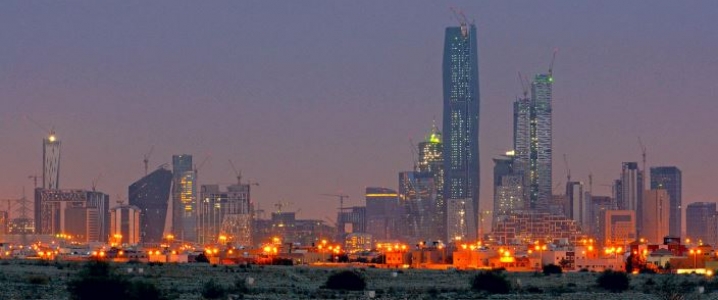On Wednesday, MSCI said that it would reclassify Saudi Arabia as an emerging market, a move that will bring billions of dollars of inflow to the oil producing country. The MSCI index is used as a common benchmark for global stock funds intended to represent a broad cross-section of global markets. The index includes a collection of stocks of all the developed markets in the world, as defined by MSCI.
If the decision takes place as expected, Saudi Arabia, with 32 stocks, will become the third-largest MSCI country from Europe, Africa or the Middle East, behind only South Africa and Russia. Saudi Arabia is the Arab world’s largest stock market, with a capitalization of about $500 billion.
Earlier this year, rival provider FTSE announced that it would upgrade Saudi Arabia to emerging market status in several stages starting in March 2019 and ending in December that year. In May, S&P Dow Jones said it was holding consultations with investors in a bid to determine whether it would also upgrade the country’s classification.
The MSCI disclosure comes as Saudi Arabia prepares the market listing of Saudi Aramco, the state-controlled energy giant. It will represent the largest IPO in history and raise up to $100 billion in a listing which will give the state-owned company a valuation of $1 trillion to $2 trillion. Currently, bourses in New York, London and Hong Kong are all vying for the listing.
Related: Tesla Closing Down Solar Capacity
The MSCI inclusion would not only bring in billions of dollars in foreign capital, it would help Riyadh pivot from the financial doldrums and massive debt incurred during the recent oil price downturn.
Recovering from market downturn
Oil prices plunged from over $100 per barrel in mid-2014 to below $30 per barrel by January 2016 amid a global oil supply glut. Much of that glut came from U.S. shale oil producers but the Saudis responded in what can arguably be called one of the world oil market strategy moves in decades.
Faced with new competition from U.S. producers, the Saudis decided in late 2014 to forgo its traditional role as oil markets swing producer and stabilizer and open the spigots, ramping up production to protect market share and drive U.S. shale oil producers out of business. The logic was straight forward: Since U.S. shale oil producers had a high break even cost while the Saudis had one of the lowest in the world, an over supplied market and corresponding lower prices would drive U.S. producers out of business. However, it would still allow the Saudis to maintain market share and remain profitable. However, that strategy back-fired.
The pump-at-all-costs Saudi move not only caused global oil markets to convulse but the Saudi economy as well. In 2016, a little more than a year after the Saudi oil market move, the Kingdom recorded a government debt equivalent to 13.10 percent of the country's GDP for that year up from 5.8 percent in 2015 and only 1.6 percent in 2014.
The Kingdom ran a record budget deficit of $97 billion in 2015 and nearly $90 billion the next year, forcing Riyadh to issue it fist even international bond sale to raise much needed funds.
Related: OPEC Edges Closer To Production Agreement
The government also put in place unprecedented and politically unpopular austerity measures.
Saudis get their swagger back
However, the early 2017 Saudi orchestrated move as it led OPEC and non-OPEC producers, including Russia, to trim 1.8 million barrels per day (bpd) of oil supply from global markets not only drained OECD oil supplies to five-year averages (the goal of the oil cut back), it also put a floor under oil prices, driving them up, breaching the $80 price point in May. It also restored the Saudi’s confidence in their ability to sway oil markets.
However, the caveat this time and going forward is that amid non-OPEC oil production, including the U.S., Canada, Brazil and others, a Saudi-led OPEC can’t do it by themselves and must rely on Russia to do what it could do on its own for decades. In essence, the era of Saudi dominance has given way to an era of Saudi-Russian oil markets dominance, a growing alliance that could, given the right geopolitical pressure, crack and fall apart in the future. The Saudis may have their oil markets swagger back, but it comes at a cost.
By Tim Daiss for Oilprice.com
More Top Reads From Oilprice.com:
- The U.S.-China Trade War Is Great News For OPEC
- OPEC’s Agreement Sends Oil Prices Soaring
- The New OPEC Deal: Paper Barrels Won’t Materialize


















